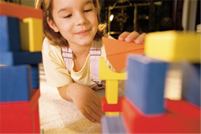Treatments & Approaches
Not everyone with ASD requires ‘treatment’, in as much that ASD is not always severely debilitating. In some people, ASD can be viewed as a ‘difference’, albeit that sometimes differences benefit from understanding and support. In many cases, people with ASD involve and contribute in society provided that their environment is ‘friendly’ and that there is an understanding of any differences. However, this is not always the case, and many people with ASD require support or special approaches to manage everyday situations.
It is generally accepted that there is no ‘cure’ for the core symptoms of ASD: A spectrum developmental disorder with significant diversity, in the range of cognitive, behavioural and sensory impairment. People with ASD of all ages are more likely to experience mental ill health, particularly depression and anxiety. Epilepsy, hearing and visual impairment, and sleep problems are also more commonly seen in people with ASD, as well as attention deficit hyperactivity disorder (ADHD). Secondary mental health problems are often treated separately, and can sometimes be understood within the context of ASD experience. In many instances, anxiety can be a significant influence on behavioural or learning challenges - support approaches will often aim to reduce anxiety.
The Scottish Intercollegiate Guidelines Network (SIGN) produced in 2007 it’s guidelines for the assessment, diagnosis and clinical interventions for children and young people with ASD. The complete guideline is available online at www.sign.ac.uk
It sometimes seems that a new therapy, treatment or approach to ASD arises or is revealed to us every few weeks or so. Methods such as cranial massage therapy, dolphin therapy, and auditory integration therapy have all but been considered ineffective, or at least are not recommended. The same too for dietary exclusions (gluten/casein) and certain vitamin/mineral therapies, although there continues to be extensive research into ‘allergy induced autism’, and gastrointestinal and metabolic issues are considered by some to be relevant in ASD. Intensive behavioural approaches (such as applied behaviour analysis (ABA), have been reported to have positive effect in some children with autism, although the level of input and potential cost means that such approaches are often out of reach or impractical to families. The Son-Rise program taught at the Options Institute is another relatively intensive behavioural method employed in the treatment of some children with ASD. However, no formal studies have verified the effectiveness of this approach, despite some anecdotal evidence which supports the method for some children.
The behavioural management system TEACCH (Treatment and Education of Autistic and related Communication Handicapped Children) has shown to be a positive approach towards the teaching and support of people with ASD of all ages. The approaches accounts for the affinity with routine and the positive response to structure and predictability that people with ASD often have, taking also into consideration and responding appropriately to differences or impairments in communication and understanding. A ‘formal’ TEACCH approach is recommended primarily for use with people with ASD who are ‘less able’, particularly in cognitive and communicative ability, although the principles of TEEACH can be employed positively with people with ASD with higher cognitive functioning.
The Picture Exchange Communication System (PECS) is a useful approach towards facilitating and improving communication with children (and adults in some cases), particularly those with very limited or no use of verbal communication. The system allows people with ASD to develop approaches to communication effectively and understand – ultimately a priority in most ASD support or intervention.
Note on Interventions
Often there is a desire to attempt to ‘cure’ the person of ASD, or, quite naturally, to implement every possible therapy available in an attempt to ‘reach’ the child or improve their functioning. Parents or carers with a newly diagnosed child are often so understandably desperate to improve the outcomes for their child that they are vulnerable to attractive but expensive approaches, which have in reality a limited evidence base of success. It is important however to keep an open mind about possibly helpful approaches, whilst also being cautious in our pursuit of changing someone who is experiencing an often complex disability or difference.

